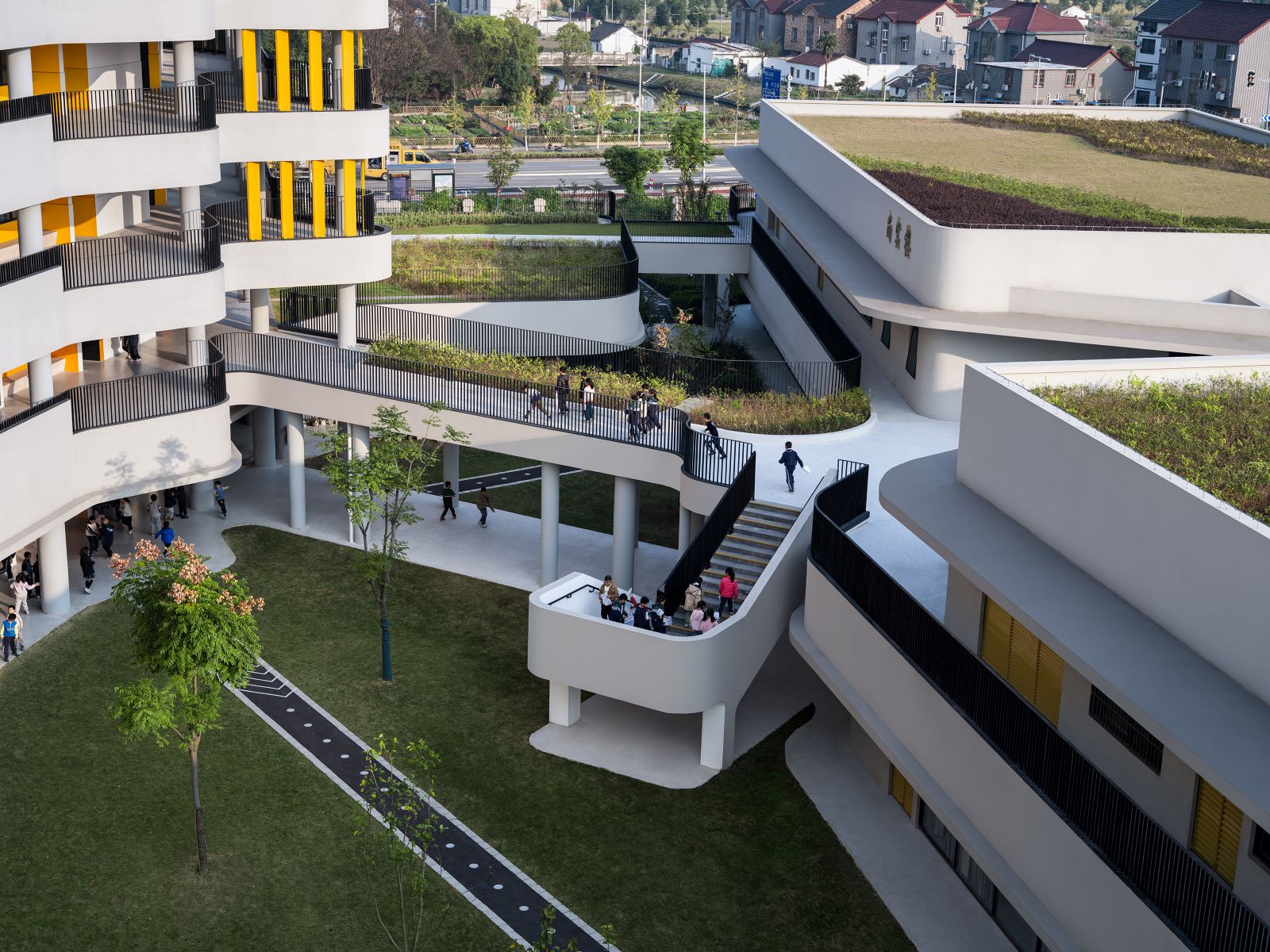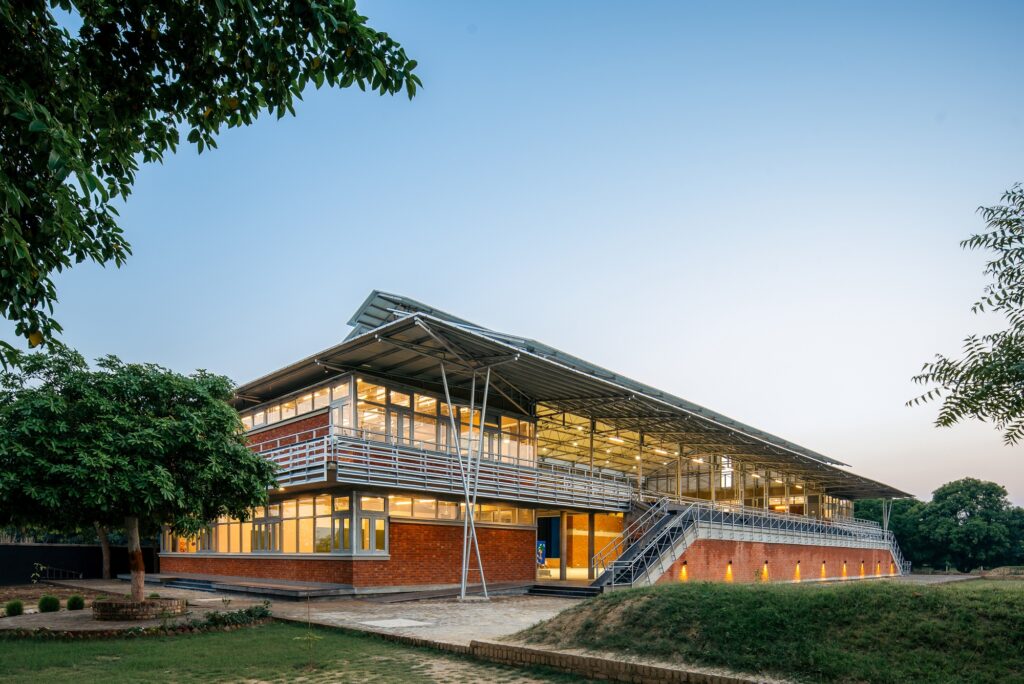
The Taksila Academy Activity Centre is the third structure of the academy in Akbarpur, Uttar Pradesh, India. The others are primary school and senior school. The client wanted to increase the sport and cultural facilities for his students, along with the football academy, which he facilitates out of personal interest during the evenings.
The new building sits facing the existing football field and is integrated with the existing senior school building through pathways and porches. The football field commanded the axis and placement of the new project.


The building houses a sports hall of (18x30m) with multiple courts, activity rooms, and conference rooms. The hall, equipped with the stage (8×12.5m), green rooms and storage, can also be used as a large multi-purpose area facilitating a range of other cultural events such as concerts, plays, etc. The hall is equipped with built-in bleachers for 100 students for the sports hall and 170 students on the first floor looking out onto the football field.
After dismantling his edible oil factory, the client was left with a high tonnage of steel trusses and columns in all forms and sizes, which he wished to reuse for the new project.
Upcycling of the old metal became one of the most motivating aspect of the project. As much as it was adhering to our responsibilities towards sustainability, upcycling also came with a lot of challenges, especially of building in a third tier city with limited and less sophisticated construction infrastructure.


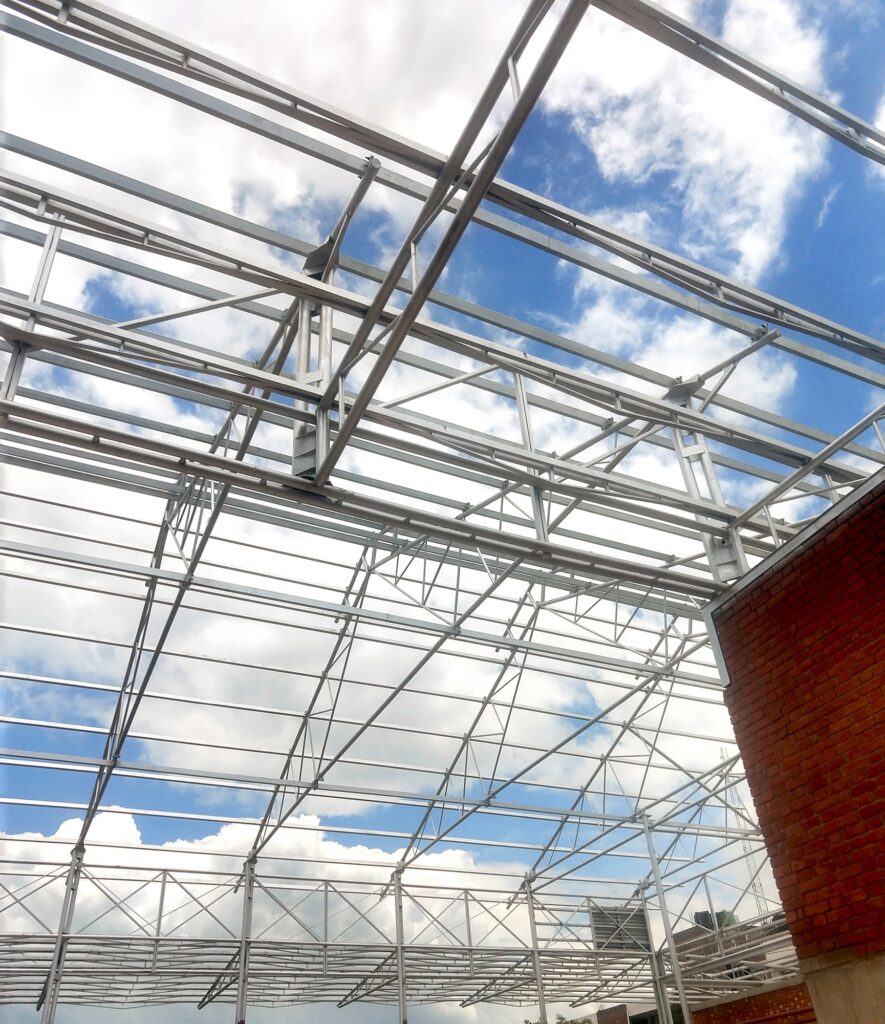

We did the inventory of old-style Fink trusses (18m), Mono Trusses ( 9.8 m), double Columns (6m, 5m), Purlins and factory louvres. The challenge was to reuse as many elements as possible, demonstrating a real hand on upcycling but also making the project look contemporary and light.
The project was designed from top to bottom instead of the reverse. The roof was designed foremost, as per the available structural elements, almost like fitting a jigsaw puzzle with permutations and combinations, catering to the functions coming underneath. It was extended on the front side with the help of two twisted columns and new trusses made by retrofitting the old trusses to fit the dimension of the cantilever. The front side covers the entrance and seating, facing the field.



The roof not only provides shelter from the wind and sun but also creates an amalgamated space between the indoor and outdoor zones.
Consequentially, we decided to construct the ground floor in a conventional RCC frame structure with a metal structure on the first floor, dividing the building horizontally into a heavy base made of exposed brick walls contrasting with the lightness of the metal roof structure above.
Viewing this project from the football field reveals an expansive roof canopy with an opaque ground floor and a floating/almost transparent upper floor.
Also, giving the impression that the project is anchored/raised off the ground with the light steel structure suspended above, touching the sky.

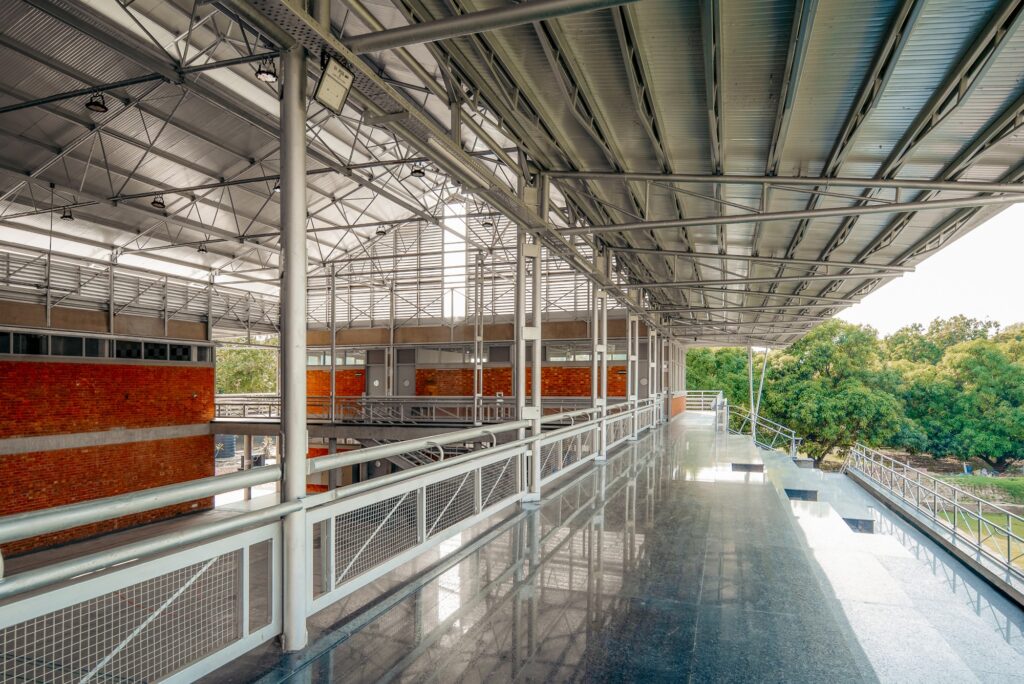
The lightweight metal puff panel roof is formed in three parts, held up by the metal columns. It is a combination of hipped and gable roof separated by a louvered façade which brings in the refracted light and keeps to budget under control. The louvres get repeated and are used as railings on the first floor to harmonise the project. Old purlins and extra columns were upcycled into bracings, connectors, large span railings and structures for staircases.


This building is entirely naturally ventilated; the dominant winds from the North, and North West for most of the year pick up the moisture from the football field and the orchard before crossing the building and getting exhausted from the top roof.
The circulation on the first floor, wrapping around the building in continuity, allows for the hanging gallery and bleacher seats overlooking the football field. It allows for the movement from inside to outside in an unobstructed manner. The continuous circulation of the first floor and the floating roof adds to the horizontality of the project, practically dematerializing the verticals.
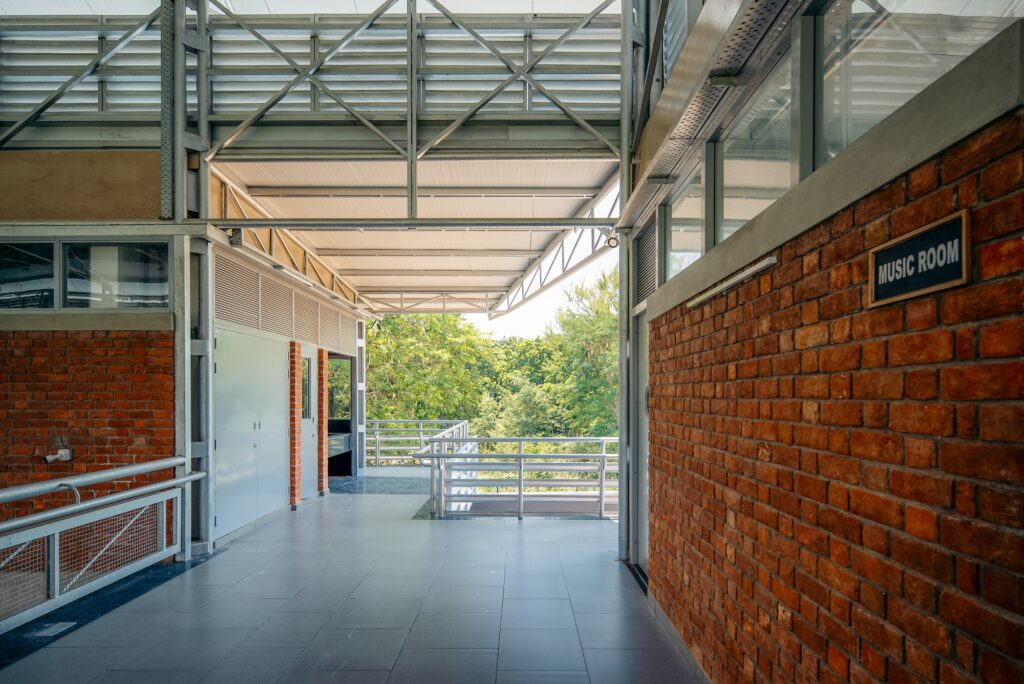
Windows are shaded with deep verandas /galleries on all sides. The hall is naturally lit for daytime purposes and equipped with sports lighting for the evenings and stage performances.
A neutral metallic colour scheme for the metal strengthens the weightlessness of the roof and trusses. The exposed bricks and concrete add to the earthy colour tone of the project.








Drawings
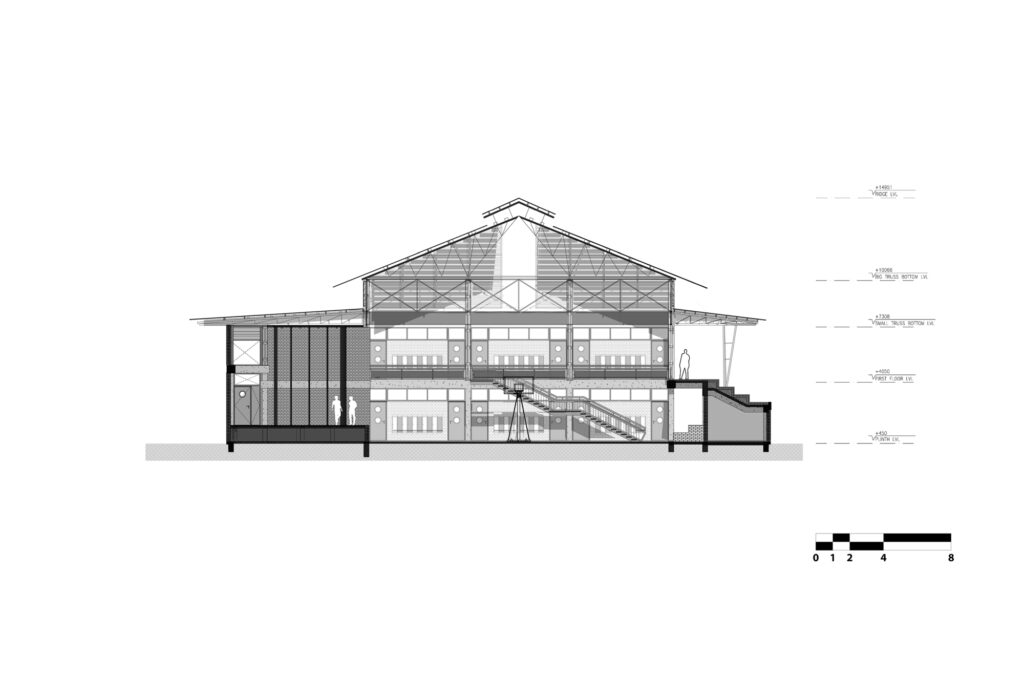

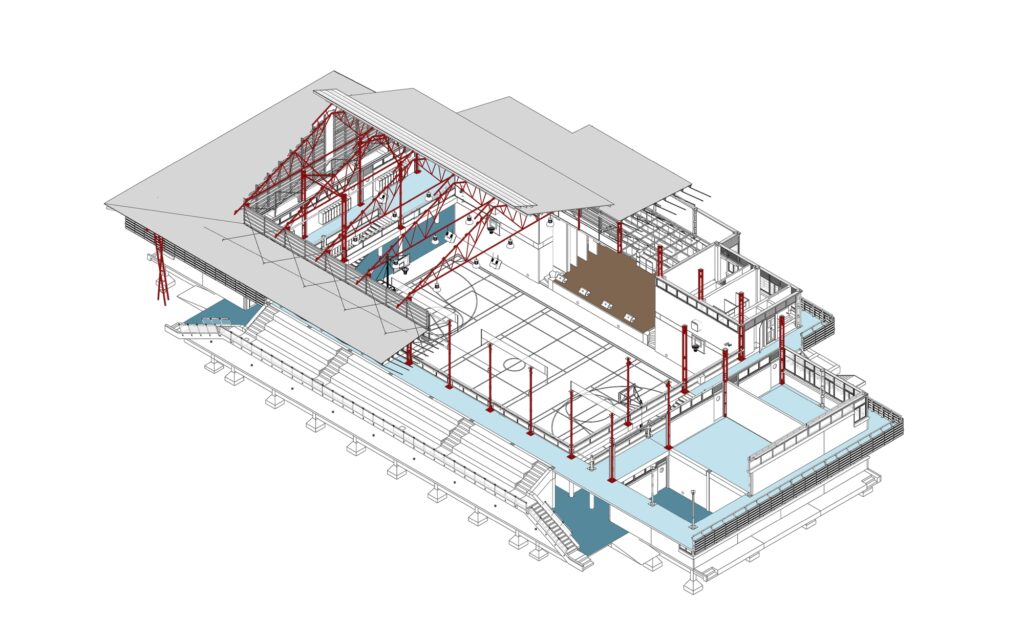

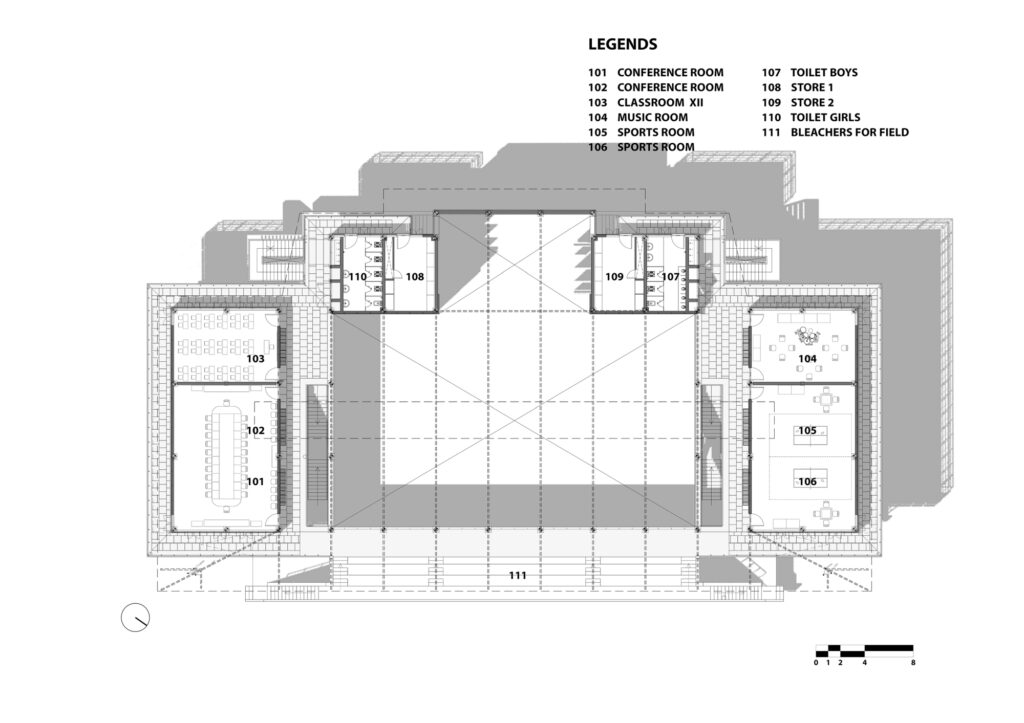
Project Details
Firm Location: New Delhi, India
Completion Year: 2023
Gross Built Area (m2/ ft2): 26000 Sqft
Project Location: Akbarpur, Uttar Pradesh ,India
Program / Use / Building Function: educational
Lead Architects: Shaily Gupta
Design Team: Joy zen , Prathmesh wable , Meghna
Structural design: Manjunath & Co
MEP Engineers:- Prifactors engg
Clients: Raghuraji devi foundation trust
Photo Credits: Sohaib Ilyas



